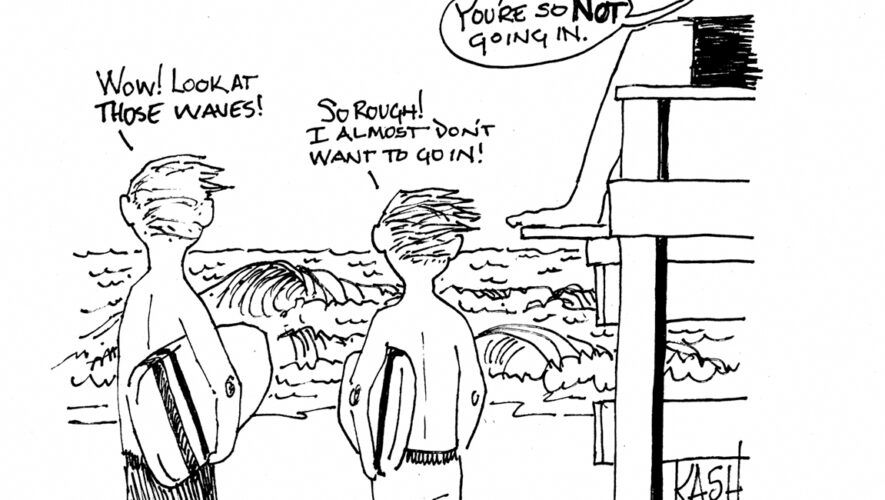After watching the arctic blast of false information pushed by political agenda come flying out of Texas last week, let’s all be sure when we’re debating the impact of the proposed Ørsted offshore wind farm that we’ll be dealing with facts rather than bias and unfounded fears.
Last week’s frigid weather in Texas caused power outages to millions of homes.
Anti-green energy forces were quick to pounce on the Lone Star State’s wind energy segment, laying blame squarely on renewable energy for the outages. That was compounded by their allies in the media to further the argument that coal-fired and natural gas-fired energy is the only solution for the future.
The record was quickly amended. It was revealed that most of the energy produced in Texas is from natural gas and coal, with a smaller portion produced by nuclear. Those plants were shutting down and mainly to blame for the rolling blackouts.
The problems with the wind farms in Texas, which did indeed shut down and contribute to the power shortages, came about because they were not built to operate in that cold weather. Other wind farms in the U.S. and around the world are better prepared, using different types of material for their blades that can shed ice and warming equipment to keep them operating no matter the temperature.
It was poor planning all around in Texas that led to the crisis.
Unfortunately, the political bias grabbed a lot of attention and was pounced upon locally to attack the plans for a massive wind farm off the coast of southern New Jersey.
This isn’t the time for misinformation.
There is time to find out the facts – the good and the bad – to separate truth from fiction, to determine what’s based on science and what is based on guesswork or good wishes.
And there is a lot to be explored with Ørsted’s wind farm plan.
The people affected by the 99 or so wind turbines to be located 15 miles off the coast should learn as much as they can about both the potential problems and the inherent benefits.
So far at Ocean City Council meetings, it has been non-stop fear mongering about how the turbines could potentially impact the resort’s real estate prices and tourism. We don’t know whether that is true. Fortunately, council members also are suggesting they want to learn more and are encouraging local residents to research wind energy on their own.
We all need to learn more.
We need answers on a range of issues to help determine whether there are true environmental and economic reasons to oppose this wind farm, which would be visible on the far horizon from north of Atlantic City to Stone Harbor. Ørsted is proposing an additional wind farm on the site that would be visible all the way down to Cape May.
The concerns go beyond real estate and tourism.
Questions have been raised by the commercial fishing industry about how the wind farm would impact their livelihoods. Those are serious concerns that must be addressed.
There are questions about how the scores of 850-foot-tall wind turbines would affect bird populations and migratory birds, not to mention the electromagnetic fields that would be produced.
We need to know the actual value of the wind farm in decreasing carbon emissions: would it have a net benefit?
This is a roughly $1.6 billion project that would use wind to generate power for 500,000 New Jersey homes and businesses over its 25-year lifespan. The cost to New Jersey utility consumers is $1.46 a month added to their bills for 20 years. It isn’t much, but what are we all buying?
On the issue of reducing the planet’s carbon footprint, where is the analysis of using wind power for 25 years versus the carbon cost of coal- or gas-fired generating plants over that time period?
That analysis has to include the carbon cost in building the turbines, from the time a shovel goes into the ground to excavate the elements used to build it, to construction through to the time is is decommissioned and deconstructed.
We’ve seen one study that says a wind turbine pays off those carbon costs in less than a year. Are there specific studies that can be applied to these towers and turbines in this wind farm?
All of these questions should be answered by Ørsted with independent research to verify them.
Fears about renewable energy have been stoked by oil and gas producers and their political allies, along with climate-change deniers.
What about property values, tourism and commercial fishing? Are any of these fears justified?
There is more than two years to go before any type of construction can begin on Ørsted’s project with plenty of public hearings between now and then to raise concerns.
Let’s make sure those concerns are real and have a basis in fact. Only then can we weigh our risks versus our responsibilities in fighting climate change, a critical issue here at the shore where rising sea levels have the most impact.


